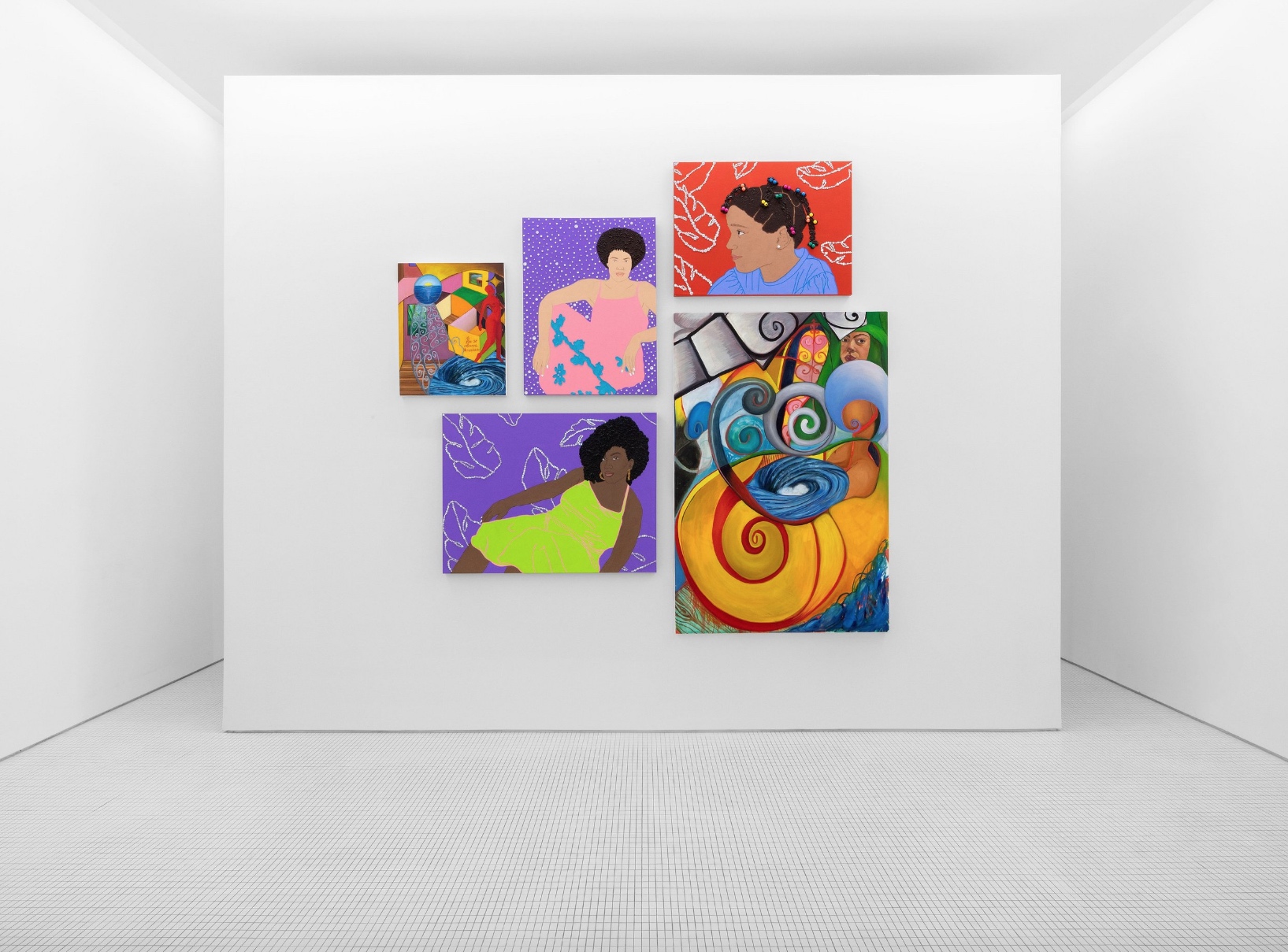Tiffany Alfonseca and Monica Hernandez are “Found in Translation” at the Library Street Collective in Detroit
Gallery

"Found in Translation - Tiffany Alfonseca and Monica Hernandez" photo courtesy Library Street Collective
In downtown Detroit’s thriving commercial alley known as “The Belt,” the spotlight is shining on the female body. Explore the world of the Library Street Collective’s newest exhibition, “Found in Translation.” This intriguing exhibition joins the creative powers of modern artists Tiffany Alfonseca and Monica Hernandez, who urge you to discover the true nature of womanhood through their diverse paintings.
“Found in Translation’’ tells the tale of artistic and cultural appreciation. Two Dominican-American artists who reside and work in New York teamed up to spread their message “about body image and mental health,” says Melanie Baer Schwartz, Director of Sales at the Library Street Collective.
The exhibit celebrates the female body while examining topics relating to the artists’ shared Dominican heritage.
By presenting women from various backgrounds, skin tones, and body shapes, both artists showcase the diversity within Black and Afro-Latinx communities.
Tiffany Alfonseca’s paintings highlight female strength and self-love and she employs a variety of materials, such as glitter and rhinestones, to produce colorful and textured artwork.
Monica Hernandez is a skilled artist recognized for her vivid paintings that question established standards, particularly those pertaining to the female body. At the age of six, she relocated to the Bronx, New York, from her birthplace in the Dominican Republic. Her experiences as a woman of Dominican heritage and her upbringing have had a profound impact on her art. Hernandez frequently depicts women of color in home environments, giving these pictures personality and capturing the complexity of the women’s lifestyles.
Alfonseca depicts powerful women in her paintings who challenge stereotypes about identity and beauty. “Ella ni trata, y llama la atencion (Ana)” and “La nena tiene Pod,” highlight the courage of Dominican women.
Schwartz observes, “Tiffany develops relationships with people and invites them to sit for her, emphasizing that there is no one-size-fits-all definition for the way a Dominican woman should be.”
Schwartz adds, “These two women are both Dominican and, of course, they look quite different.”
Schwartz noted, “Tiffany’s work is definitely way more focused on the figure. Outwardly, Monica’s work also has a focus on the figure, but it also has this idea of the continuum of space, time, and place, so I think it’s interesting to sort of pair their works together to sort of see that they’re both talking about their Dominican heritage and are both talking about body image and appreciating the female body. But the way that Monica presents her work is definitely vastly different from Tiffany.”
Hernandez’s work features swirls that are inspired by Dominican architecture, adding layers of meaning.
The Library Street Collective collaborates closely with other local galleries and institutions to guarantee that Detroiters have access to the arts and culture. Schwartz explains that the gallery has a community-centered mission: “A lot of the projects that we do are free and open to the public. We’re dedicated to our community and supporting artists within our community, bringing international artists to our community.”
Anthony and JJ Curis established Library Street Collective in 2012. Though it started out as a side project, it has developed into an exciting center for modern art and engagement with the community. The gallery has worked with both renowned and up-and-coming artists throughout the years; a few of them include McArthur Binion, Beverly Fishman, Nick Cave, and Frank Stella. The Library Street Collective’s influence goes beyond the gallery’s doors; they’ve turned “The Belt” alley into a place where artists have installed public art pieces as well as sponsored art installations throughout the city.
Schwartz mentions that the Library Street Collective has had countless achievements in the past 11 years: “We’re really excited to open our arts campus on the east side; that’ll be a big achievement. We’ve been at some international art fairs. We’ve been supporting our artists and helping their work find homes in international collections, foundations, and museums. So I think that’s also a pretty big accomplishment.”
The COVID-19 outbreak caused major disruptions to events and exhibitions in the art world. Library Street Collective’s online presence enabled them to continue what they were doing. Although the programming at their physical gallery has changed, they are still fully committed to helping artists and interacting with the community. Schwartz said, “I think that being in Detroit, we’re outside of the normal arts hubs of London, New York, and LA, so we’ve always had a digital presence. I think that we didn’t really have to pivot that much during the pandemic.”
The Library Street Collective is anticipating a bright future full of fascinating exhibitions that will mesmerize art lovers and include the local community.
Schwatz said, “We have an exhibition with Kia Breon, who’s a lens-based artist; she’s a black female living and working in Kansas City. Her work has to do with Afro-Futurism and surrealism, so we’re really excited to present her new works.”
The gallery will also be showcasing young artist Natalie Wallington, a recent graduate of Cranbrook Academy of Art in Bloomfield Hills, Michigan. “Found in Translation” is evidence of the gallery’s dedication to presenting culturally sensitive exhibitions.
The Library Street Collective gallery is open Wednesday through Saturday from 12:00 p.m. to 6:00 p.m. “Found in Translation’’ is on display through Nov. 8.
